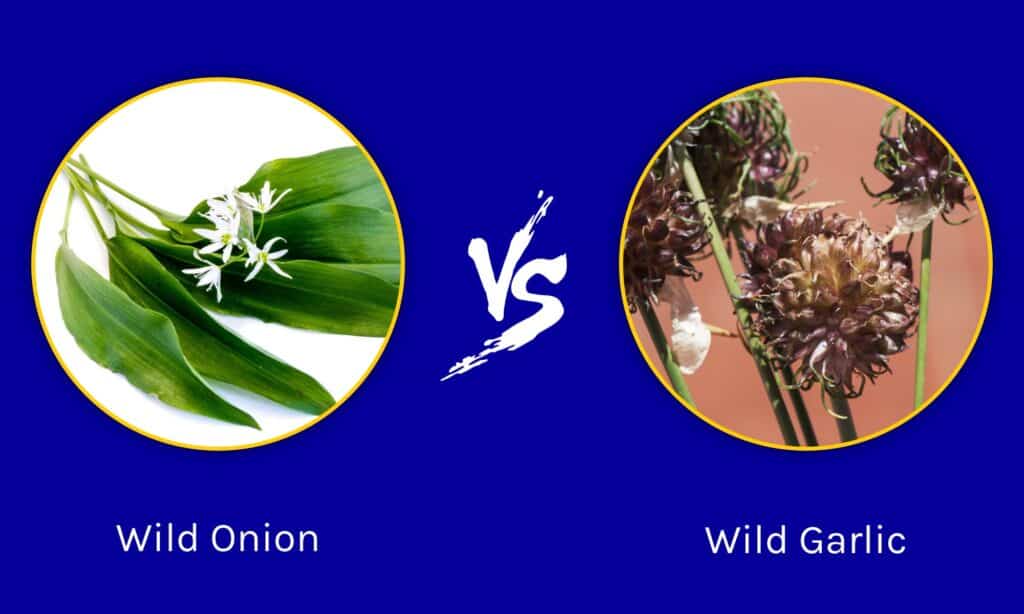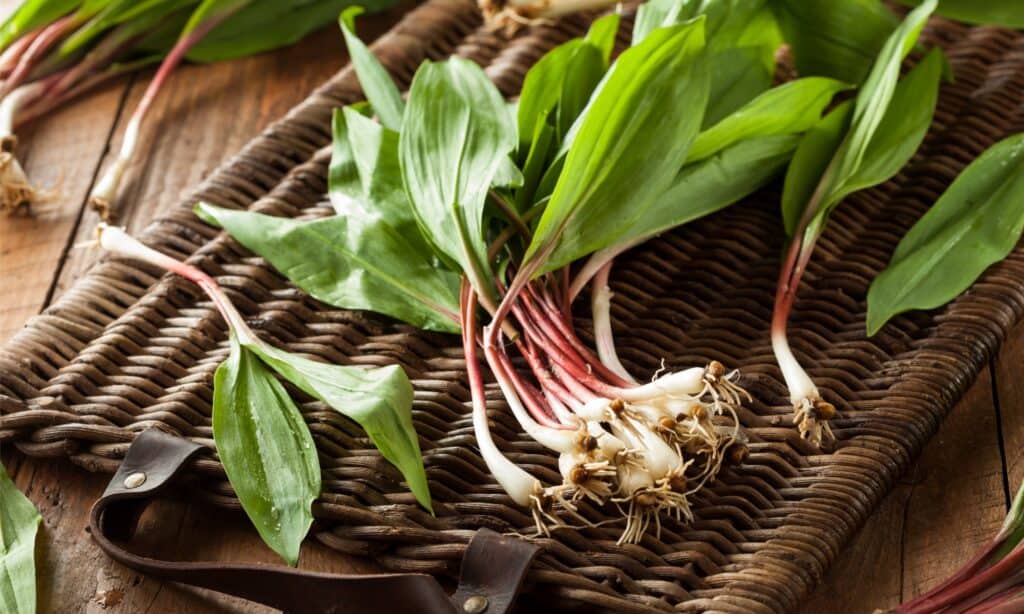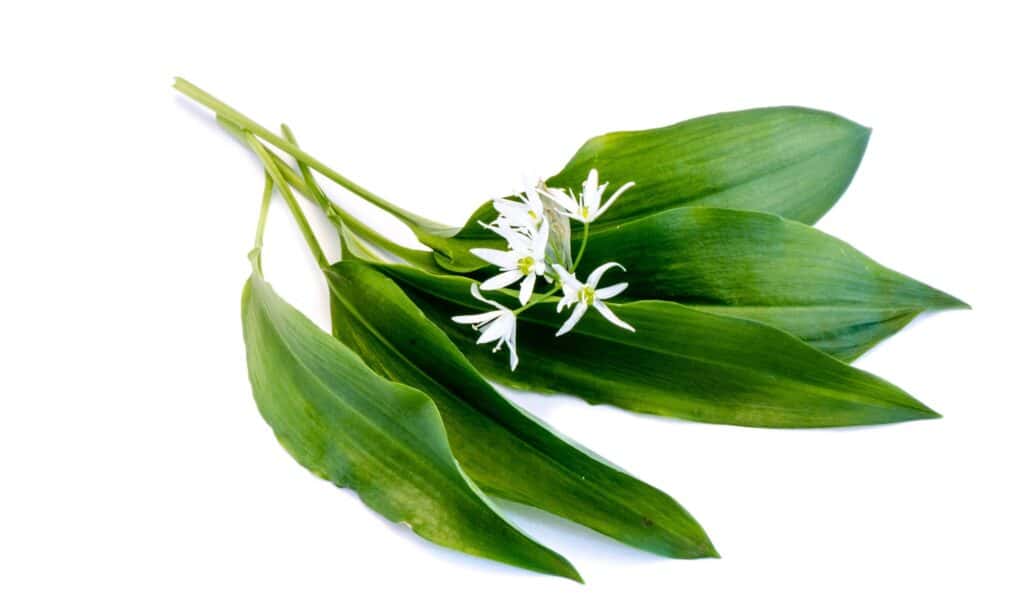If you are having trouble determining the difference between wild onion vs wild garlic, you’re not alone. These plants look strikingly similar to one another, and too many people would argue that the best way to tell the difference between them is to taste them. But what other things can you use to tell them apart, and what are both of these plants typically used for?
In this article, we will compare and contrast wild onion with wild garlic so that you can fully understand all of their similarities and differences. We will go over their classifications as well as what they look like in case you are foraging for them in the wild. Finally, we will go over what they are used for and how they grow best, in case you want to grow them in your own backyard. Let’s get started!
Comparing Wild Onion vs Wild Garlic

| Wild Onion | Wild Garlic | |
|---|---|---|
| Scientific Classification | Allium canadense | Allium vineale |
| Description | Root or bulb covered in brown fibers, similarly to a typical green onion. Leaves are flat and wide, in a vivid green, reaching up to 1.5 feet tall. Flowers bloom in umbels or close clusters, found in white or pink shades | Root or bulb covered in white or brown fibers, similarly to a typical green onion. Leaves are hollow and range from white to green, reaching up to 2 feet tall. Flowers bloom on unique purplish heads with twisted tendrils in green and brown |
| Uses | Used as a wild substitute for onion, given its distinctly similar flavor | Used as a wild substitute for garlic, given its distinctly similar flavor, though the aftertaste may make this option less preferred |
| Origin and Growing Preferences | Originated in the Eastern United States; grows well in full sun and open areas, as it is a wild plant | Native to Europe and Africa; grows well in most locales, and is considered a noxious weed in some parts of the world |
| Special Features | Similar in appearance to the death camas plant, which is extremely poisonous! | Powerful enough to impart a garlicky flavor into the meat and milk of livestock that grazes on it! |
Key Differences Between Wild Onion vs Wild Garlic

When foraging for these plants in the wild, the wild garlic plant smells consistently of garlic, while the wild onion plant has a more subtle onion scent.
©Brent Hofacker/Shutterstock.com
There are a few key differences between wild onion and wild garlic. For example, wild onion grows slightly shorter compared to wild garlic. The leaves of the wild garlic plant are hollow and rounded, while the leaves of the wild onion plant are flat. When foraging for these plants in the wild, the wild garlic plant smells consistently of garlic, while the wild onion plant has a more subtle onion scent.
Let’s go over all of these differences in more detail now.
Wild Onion vs Wild Garlic: Classification
There are enough undeniable similarities between wild onion and wild garlic that it makes sense they belong to the same genus. However, these plants are separate species from one another. For example, wild onion is classified as Allium canadense, while wild garlic is classified as Allium vineale. Allium includes other common onions such as leeks and shallots.
Wild Onion vs Wild Garlic: Description

Wild garlic leaves are rounded and hollow, while wild onion leaves are flat.
©Madeleine Steinbach/Shutterstock.com
It can be incredibly difficult to tell the difference between wild onions and wild garlic upon first glance. However, if you look at the leaves of both of these plants, you will notice that wild garlic leaves are rounded and hollow, while wild onion leaves are flat. The wild garlic plant also grows slightly taller than the wild onion plant, though this distinction is extremely subtle.
If you happen upon these plants while they are blooming, their flowers look extremely different from one another. For example, wild onion flowers are star-shaped and clustered, typically in an umbel format, while wild garlic flowers are rare and grow from a unique purplish bulb at the top of the plant. The best way to tell these 2 plants apart is to smell them: wild garlic smells clearly of garlic, while wild onion has a subtle onion smell by comparison.
Wild Onion vs Wild Garlic: Uses

Wild garlic tends to have a stronger aftertaste compared to common garlic, and wild onion doesn’t have any reportedly negative aftertaste.
©iStock.com/Juan Francisco Moreno Gamez
The uses of wild onion and wild garlic are similar to one another, in that they are both substitutes for their onion and garlic counterparts. However, wild garlic tends to have a stronger aftertaste compared to common garlic, and wild onion doesn’t have any reportedly negative aftertaste.
Wild Onion vs Wild Garlic: Origin and How to Grow
Wild onions and wild garlic grow around the world nowadays, but they have very different origins from one another. For example, wild onion originated in the eastern United States, while wild garlic originated in Europe and Africa. Both of these plants grow in the same fashion, craving full lights and open spaces. In fact, wild onion and wild garlic are considered noxious weeds in some locations around the world, so be sure to plant with care.
Wild Onion vs Wild Garlic: Special Features

Wild onion originated in the eastern United States, while wild garlic originated in Europe and Africa.
©iStock.com/Martin Keiler
Both wild onion and wild garlic have some surprising facts about them. For example, livestock that consistently graze on wild garlic plants reportedly taste like garlic when they are used for meat or milk production. Wild onion is definitely a plant to forage with care, as it looks strikingly similar to the death camas plant when blooming, one of the most poisonous plants in the world!
The photo featured at the top of this post is © Brent Hofacker/Shutterstock.com
Thank you for reading! Have some feedback for us? Contact the AZ Animals editorial team.






